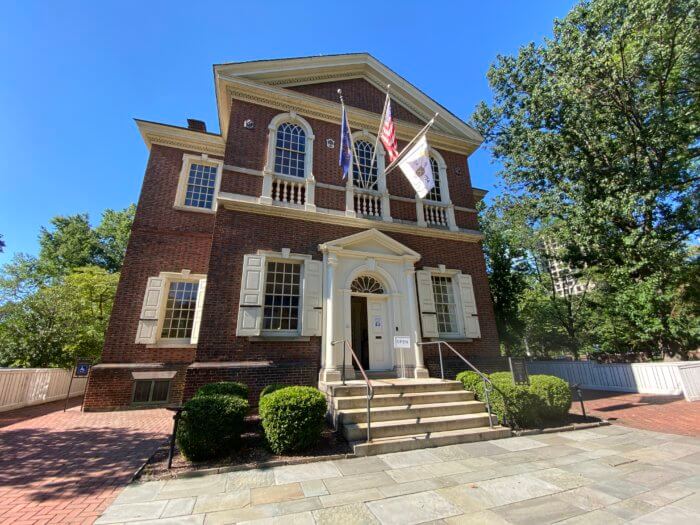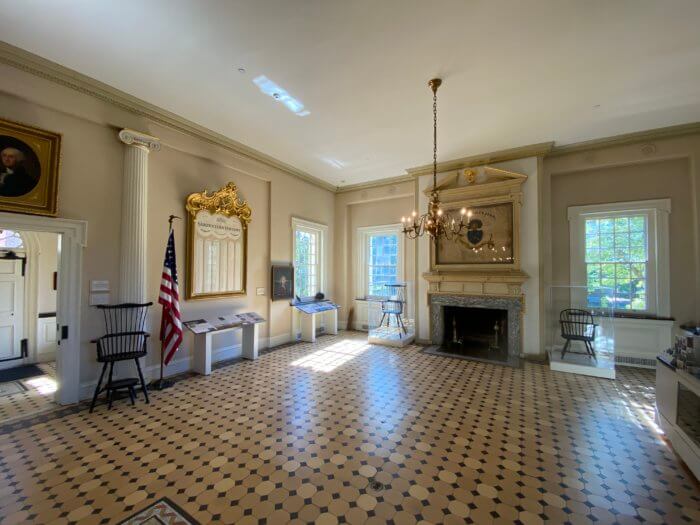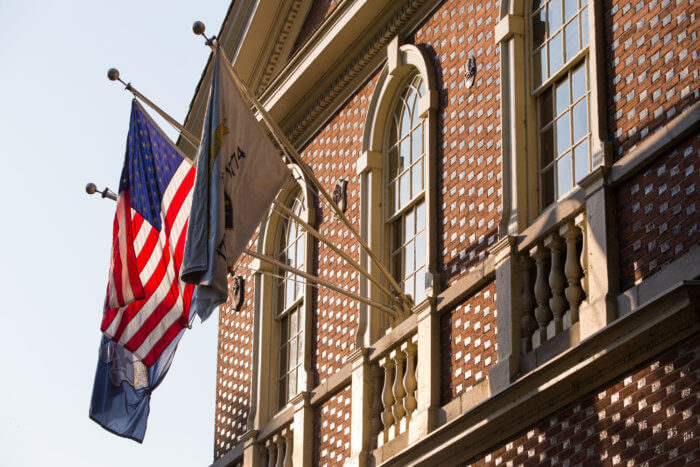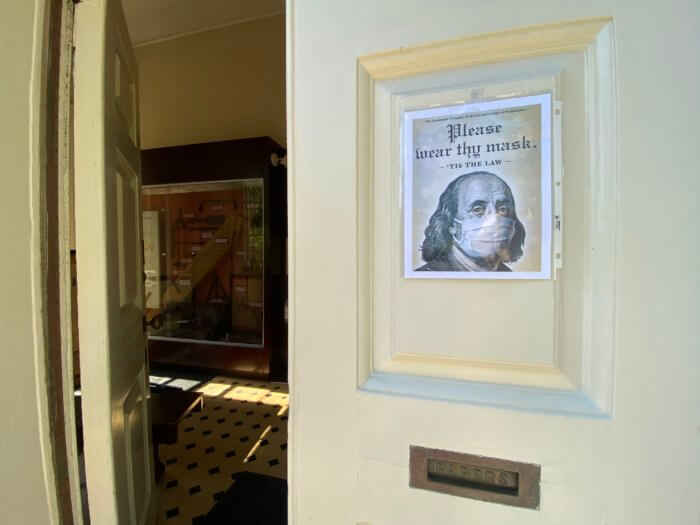Philadelphia has always been known for having a rich and distinct cultural vibe, whether it be from the people who live here, the sports teams that call the city home, or the notable culinary offerings being offered up, the City of Brotherly Love truly is unique. One aspect of Philly that truly sets our city apart from others however is the historical influence that still lives and breathes around us to this day. Walking around town, you still see influences from the past creeping into modern architecture, and when you travel to Old City, the history of our country is still kept very much alive. Take Carpenters’ Hall for example. The building stands today just a few blocks from Independence Hall and the Liberty Bell, and many people don’t know just how much historical significance this building holds. In fact, Carpenters’ Hall has many institutional connections that makes the building and those who utilize it very much a part of our own city’s history. Once you go inside and learn a bit more, you’ll see just how relevant the past is to our present-day—even more so than you could have ever imagined.

Carpenters’ Hall, not surprisingly from its name, was built by The Carpenters’ Company of the City and County of Philadelphia, the oldest craft guild in America, in 1774. Since then, the building has been operational and still is used today by roughly 180 members consisting of architects, building contractors, and structural engineers. Typically, the building is used for member meetings, but lately, with COVID-19, the building has instead sat as a holder for many significant memories in our city’s history and as a museum for some interesting artifacts that can only be found in Philadelphia.
The building itself, is an artifact, with plenty of historical events and happenings engrained in the walls’ memories. For instance, Carpenters’ Hall was once home to Benjamin Franklin’s Library Company of Philadelphia, the American Philosophical Society and the First and Second Banks of the United States. However, the Hall might be most well known as the meeting place for events that took place from September 5 to October 26, 1774— otherwise known as the First Continental Congress.
“The First Continental Congress created a collective identity and sense of unity that drove the colonies to work together to resolve their issues with the British government,” said Michael Norris, Executive Director of The Carpenters’ Company in a release. “Our country is in a period of disunity now, and it would serve us if we could revive that sense of unification and shared desire to address our challenges together.”

The significance of Carpenters’ Hall doesn’t stop there. The Hall was also where Benjamin Franklin met with French spies to discuss the Revolutionary War, as well as home to the first bank robbery in the United States. The robbery turned out to be an inside job, but before that was discovered a man named Patrick Lyon was falsely accused of carrying out the deed. Interestingly enough, this all happened during the Yellow Fever epidemic, and to clear his name Ryan had to break out of quarantine to travel to Philadelphia while the city was on lockdown.
Inside, the Hall holds more archival information than some history books themselves. And speaking of books, the second floor, now used mainly for administration needs, is still lined with hundreds of them looking familiar to the days when the space was actually housed as a library. Artifacts wise, Carpenters’ Hall also houses two original Windsor chairs, including one used by the president of the First Continental Congress, Peyton Randolph. According to a release, before the British captured Philadelphia in 1777, it is said that members moved the chairs to their homes for safekeeping and branded them with the words “Carpenters’ Co.” under the seat, and the Hall now holds a couple of those very chairs. Other artifacts found inside Carpenters’ Hall include gilded frame membership boards, a model of Carpenters’ Hall, paintings of George Washington and early Company member Matthew McGlathery, and officers’ furniture from 1890.
Most recently added to the Hall is a sketch of a mural by renowned artist Allyn Cox documenting the First Continental Congress, which he created for the U.S. Capitol before his death in 1982. On top of the new sketch, the historic establishment is also offering visitors to participate in its My Wish for U.S. initiative, coordinated by the Smithsonian’s National Museum of American History. Visitors who participate in this new initiative will be able to use their mobile device to share a vision, hope, or wish for the future of our country, which is in its 250th year.

“We think this is not only a great way to channel the energy generated by recent mass protests into positive visions for our future, but it also resonates with the work of the First Continental Congress, whose delegates were also fighting to improve their government,” said Norris in the release. “During the shutdown, our board approved a new strategic framework for the Company that includes an updated vision and mission to use our history to inspire people to be better citizens today. Having these two new experiences on-site as we reopen perfectly embodies that vision.”
Inspiring people with history to be better citizens today will be an ideology carried out through upcoming events at Carpenters’ Hall.
On Labor Day, September 7th, the Hall will host a commemoration of the Invocation at the First Continental Congress, in partnership with Christ Church and St. Peter’s Church, then on October 7th, Philadelphians can also check out a book talk with Alexandra Kirtley, Curator of American Decorative Arts at the Philadelphia Museum of Art.
However, perhaps the most significant upcoming event arriving at Carpenters’ Hall will be its ‘Places for the People: WPA Travel Poster Exhibition’ coming November 6th through December 20th. The exhibit showcases just how connected the establishment was to early institutions such as tourism and how that truly shapes our country still to this day with current situations.

The exhibition will feature historic travel posters featuring different Philadelphia and Pennsylvania landmarks, such as the Betsy Ross House, Memorial Hall, Fairmount Park and Independence Hall. The posters were all commissioned years ago in the 1930s by the Federal Art Project of the Works Progress Administration(WPA) to promote tourism in Pennsylvania and to also provide artists with paid work during the Great Depression. The most intoxicating draw to the exhibit is the fact that several of the posters have never been on display to the public. ‘Places for the People’ showcases not only that history can still hold significance, but also that what our country may go through today isn’t quite as different than what happened years ago—and since then we have persevered.
Carpenters’ Hall (320 Chestnut St.) is now open and is free to check out. The Hall is also operating a promotion with its gift shop, where each purchase over $40 includes a vintage 24×28 black and white print of Carpenters’ Hall. To learn more information and to learn about the safety measures being taken before your visit, visit carpentershall.org





























